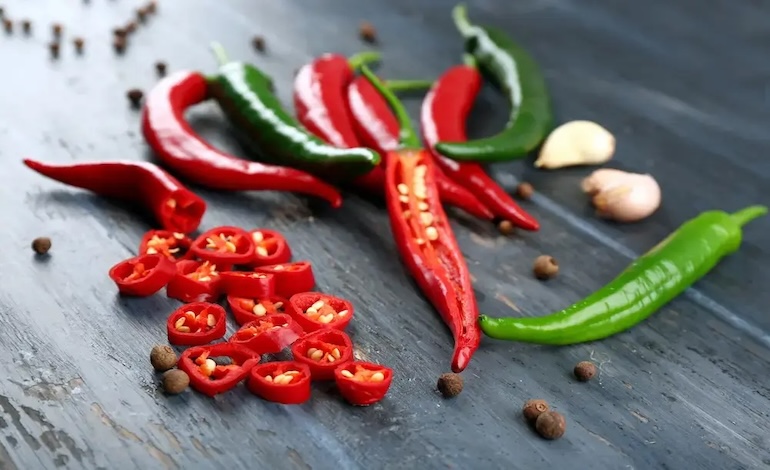The History of Ketchup

In this article, we explore the history of ketchup: by whom and when the ketchup was invented, what the original ketchup recipe was, and how this source influences our everyday life and even culture.
Nowadays, ketchup is essential and has this image of a “goes-great-with-everything” sauce. Many people see ketchup as truly American: no wonder considering it lives in 97% of US fridges. Heinz, the most popular brand of ketchup, sells over 650 million bottles of this sauce in the world every year.

The first ketchup recipe included neither tomatoes, vinegar, nor many other ingredients that make ketchup well… ketchup. The first base of the sauce was fish, then oysters, mushrooms, and only after that – tomatoes.
How did ketchup transform from Asian fish sauce to universally loved tomato dip? And what’s special about it?
💡 Curious minds welcome!
If you’re enjoying this read, you’ll love what else we’ve got. Nerdish is packed with short, fascinating reads on everything from ancient history and science to food, psychology, space, and culture. Dive into more interesting topics to learn about — all in one place.
When was Ketchup Invented, and Who Did It?
Ketchup has a surprisingly long evolution that originated in China. The first version was based on pickled fish and looked more like a soy sauce – with a dark and thin texture. It was called “keh-jup” or “koe-cheup,” meaning “fish sauce.”
Thanks to the fermentation, the sauce was easy to conserve and could make a long journey. So, eventually, at the beginning of the 18th century, British and Dutch merchants brought ketchup to Europe. There, the cooks tried to recreate the recipe and, as a result, added some new ingredients. But it was still far from the dip we know today.

For instance, in Great Britain, ketchup was based primarily on mushrooms and enriched with oysters, anchovies, and even walnuts. Similar ketchup recipes appeared in English and American cookbooks in the 18th century. The seasoning was a popular companion to soups, meat, fish, and other sauces. The first name of “catsup” officially appeared in Britain in 1690; the “ketchup” variant was first listed in 1711.
Where is the tomato, you might wonder? American horticulturist James Mease created the first known recipe for tomato ketchup in 1812. His version of sauce included brandy but lacked regular vinegar and sugar. Soon, many tomato-based ketchup recipes appeared in Europe and the USA. Yet, many of them contained previous additions, like oysters or anchovies.
Read more with Nerdish:
-
Why do people like spicy food?
Spicy food lovers enjoy the thrill of heat! Discover the science behind spice cravings, cultural influences, and health benefits of eating chili peppers.
-
When Did Coffee Become Popular? A Brief Coffee History
Coffee’s popularity grew from its origins in Ethiopia, spreading to the Middle East, and later Europe. By the 17th century, it became integral to social culture.
-
The History of Wine
Wine’s journey spans over 8,000 years, from ancient regions to modern winemaking. It influenced cultural rituals, social customs, and today blends tradition with innovation.
In the early 19 century, tomato ketchup was sold in pharmacies as a medicine for diarrhea and indigestion. During that period, farmers primarily prepared ketchup and were happy to find another way of conserving tomatoes. With the product’s growing popularity, companies decided to enter the game. Souce was more popular than fresh tomatoes. For a long time, people have considered tomatoes poisonous, so they prefer prepared fruit with other ingredients rather than fresh ones.
Henry J. Heinz started to produce ketchup in 1876. Heinz chose very ripe red tomatoes for his recipe, which contained more pectin than fresh ones. Pectin is a natural preservative that freed ketchup from additional chemicals to enlarge the expiration date. Plus, Heinz’s version got much more vinegar and sugar. This ketchup, free of chemical preservatives, quickly gained praise all over the States and Europe. In 1905 the company sold 5 million bottles of the sauce.

Suitable for almost everything, it quickly became an essential part of American cuisine. It is a traditional sauce in barbecues, fast-food restaurants, parties, etc. Despite the wide variety of condiments on the market, ketchup remains an all-time favorite. Americans consume $800 million worth of ketchup every year (in the second place after mayonnaise).
June 5 is recognized as National Ketchup Day in the USA
The straightforward answer you might have thought is “sugar.” Yes, there is 22 g of sugar in every 100 g of ketchup, making this sauce not a very healthy one. Considering zero proteins, fiber and fats, we receive no nutritional value from it. So, does sugar really make all the fuzz?

Specialists came up with another explanation for “the secret of success.” The thing is, it satisfies all 5 tastes: sweet, sour (thanks to vinegar), salty, bitter, and umami (savoriness).
This combo turned ketchup into a magic trick that could add flavor to any meal without extra preparations. June 5 is National Ketchup Day in the USA. Presumably, it was inaugurated day-in-day to Independence Day, when many Americans go out barbecuing (and taking a bottle of ketchup, of course).
There is an opinion that professional cooks don’t share typical enthusiasm over ketchup. The possible reason behind this dislike lies in the previous chapter: ketchup has too much taste. Chefs create their own recipes, working on all palettes of savors, preparing something in a specific way. But ketchup will easily dominate in every meal, destroying its original taste.
On the other hand, cooks often use ketchup as a “mother sauce” or a base for more complicated condiments. This trick helps to save time yet offers something we can’t get at home.
Recently, ketchup gained a particular niche in home cooking as well. Many people prefer the home version because they can control the amount of sugar and salt.
How is Ketchup Made?
On the industrial scale, preparing ketchup is mainly about heating and cooling the sauce to get the right consistency. Here’s an example of how Heinz ketchup is being made to give you a vivid picture. This sauce has five main ingredients: tomato paste, vinegar, sugar, brine, and “secret spices.”
First, the tomato paste is mixed with water in large cisterns to make the mass more liquid. Then it’s moved to the so-called “kitchen,” where all other ingredients are added. The mix is heated, cooled, and moved to the laboratory. Before going to the market, experts must verify the viscosity of the condiment. Heinz uses a specially made machine – the quantifier. It shows how far a certain amount of ketchup spreads in 10 seconds. The speed limit is 0.028 miles/hour. If the result is satisfactory, the product goes to the bottles. If, however, the ketchup is too thick or too fluid – the whole batch is blocked.

Ketchup modern varieties
The ketchup evolution led to many experiments with recipes in different countries. For example, in the Philippines, there is banana ketchup, where ripe bananas replace the tomato base. The sauce is red, though, thanks to additional dye.

In North Europe, people enjoy their hot dogs with curry ketchup – a more spicy variation of a classic recipe.

There are also versions that echo the before-tomato era of the sauce: with mushrooms or tomato-free. Also, there is jalapeno ketchup for those who prefer a more spicy taste and one without sugar as a healthier alternative.

Love diving into the flavorful past of everyday foods? Discover how wine evolved through ancient civilizations, or how coffee became the global drink we know today. You might also be surprised by why people enjoy spicy food — a sensory experience far from ketchup’s sweetness.
















